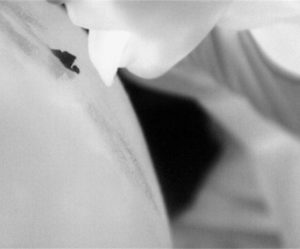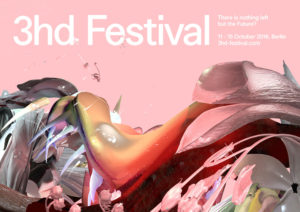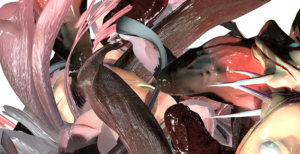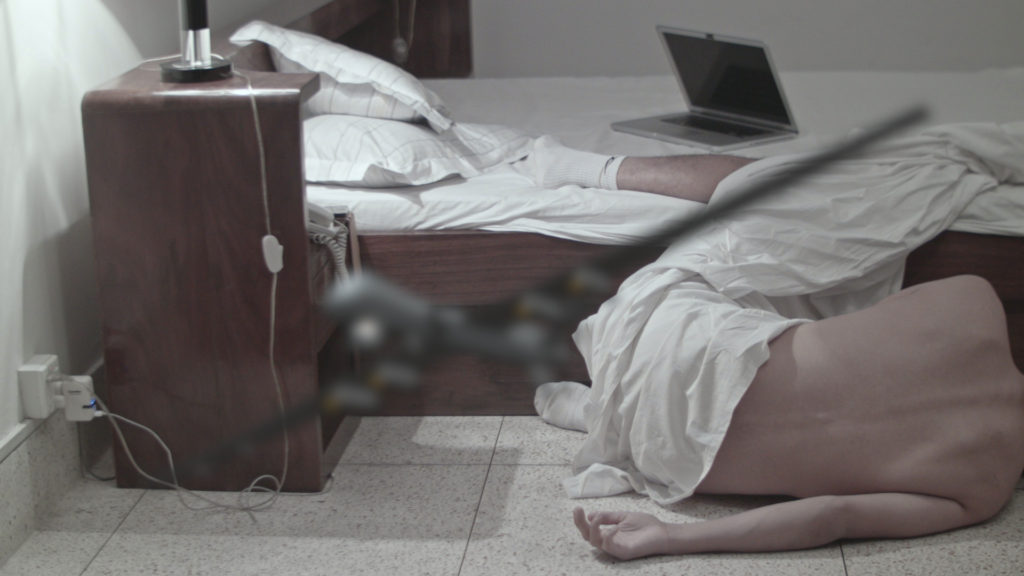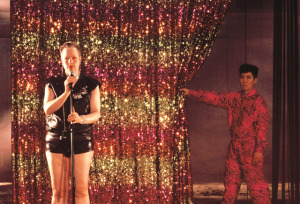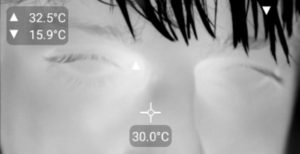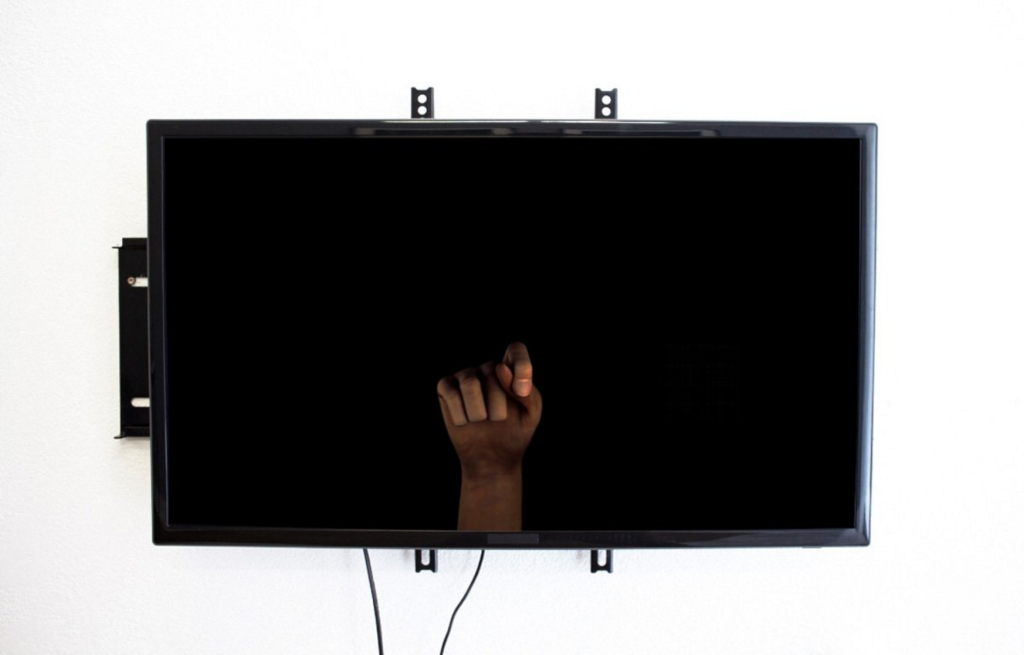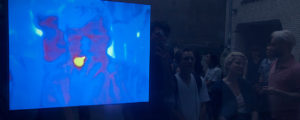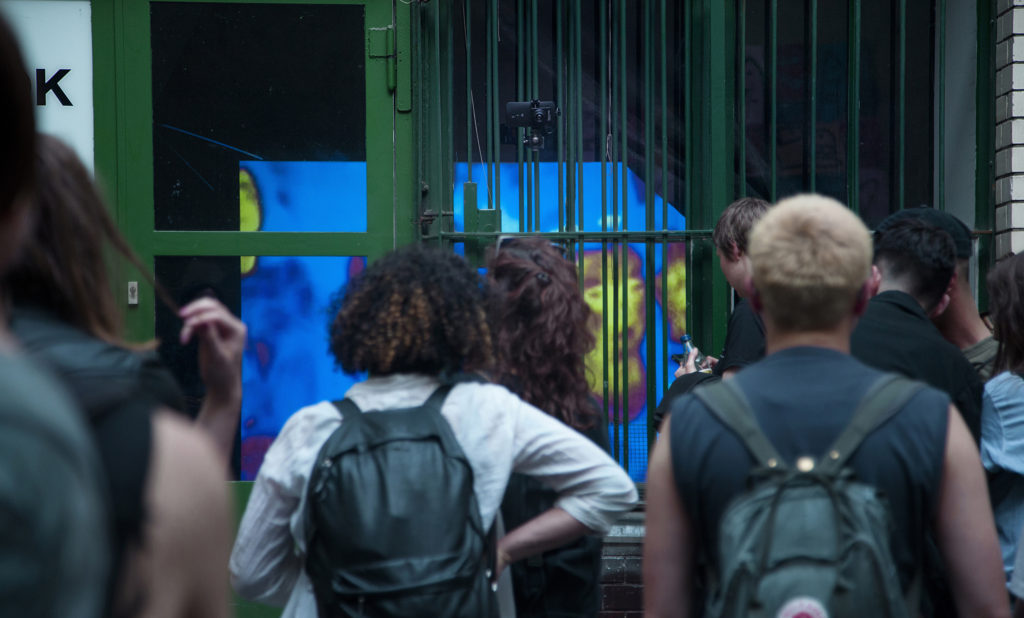The gaze comes in many guises. There’s the colonial and patriarchal one, of course, but there’s also the broader institutional one, of which there are many types of institutions. There’s community, for a start, a kind of participatory, almost ritualistic practice predicated on conformity. Then there’s mass surveillance, hierarchy and the popular notion of ‘normativity’ – museums, schools, art galleries; hospitals, prisons, psychiatry. For Vika Kirchenbauer there’s a violence inherent in all of these social constructions, and a complex network of connections and relationships that create a confluence of elements that are ultimately oppressive.
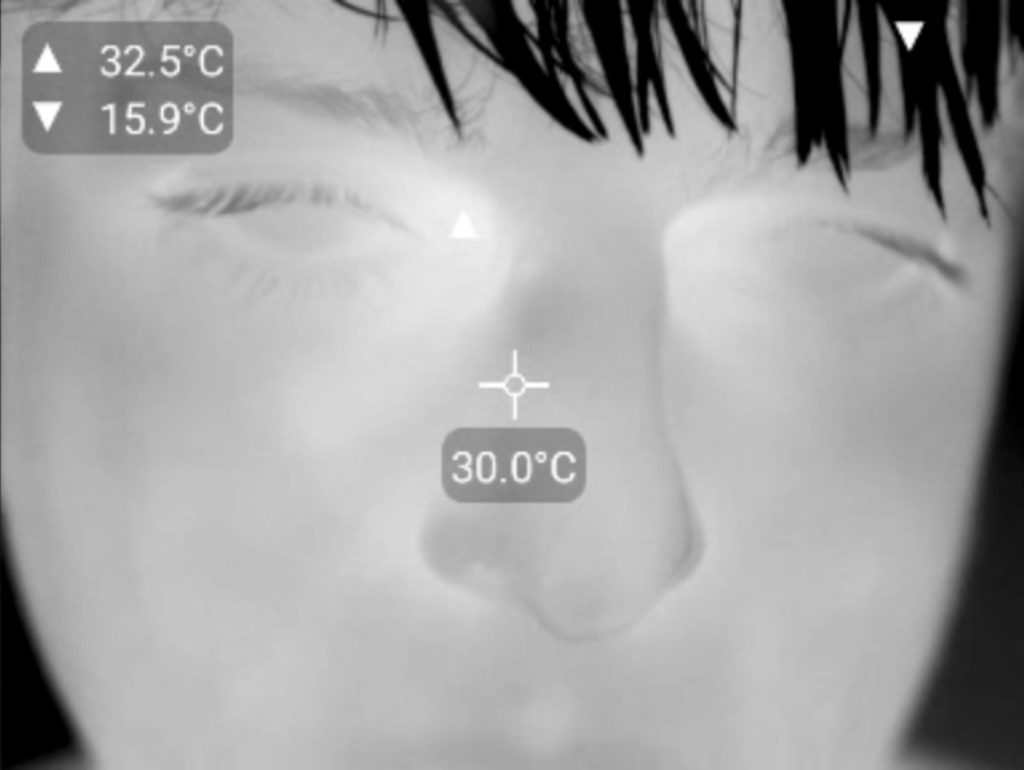
Hence, the Berlin-based artist’s COOL FOR YOU music production project. It’s part of a wider creative practice that includes video and performance, yielding insight and examination into power and self-understanding within all this gaze. For the first video premiered on aqnb to accompany her second EP, MOOD MANAGEMENT – released via Berlin’s Creamcake label on February 2 – the frame of a thermal vision camera is poised on two colourless people in action. It’s hard to tell what they’re doing, but it seems sexual, at least intimate, and there’s an ambiguous substance being consumed from various parts of the body throughout. One can only assume.
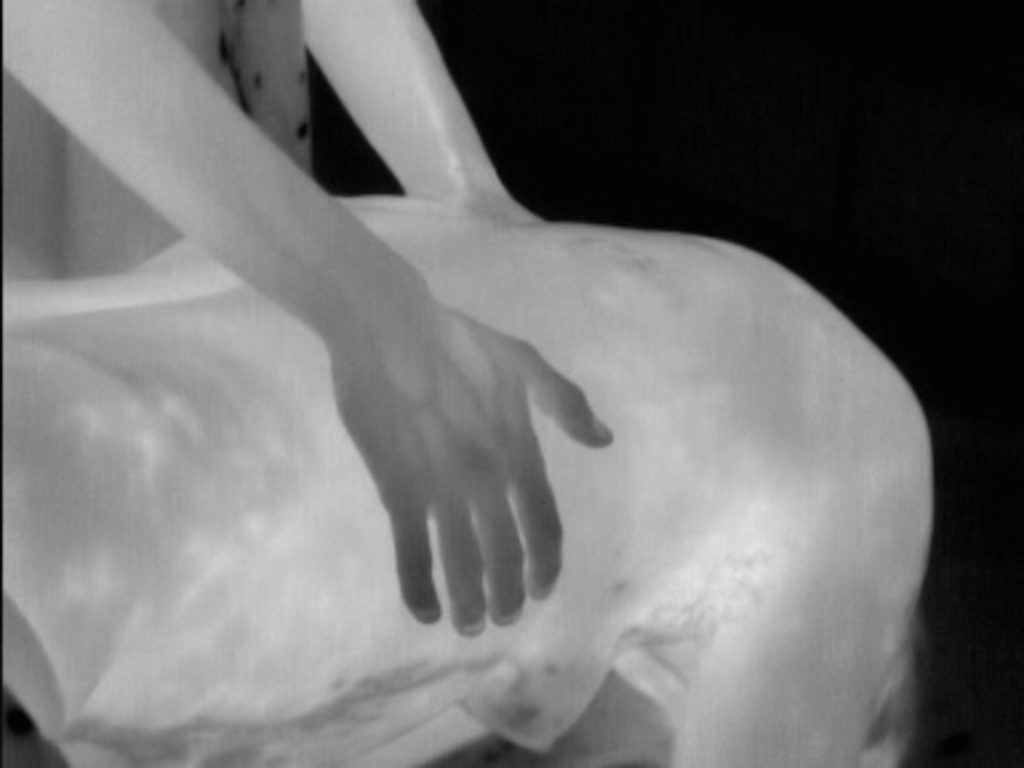
**I’m curious about this suspicion of institutions, did you study?
Vika Kirchenbauer: No, I tried briefly but it didn’t really work. Also, I don’t come from a background where it was ever really considered a possibility to study, so I think I have been intimidated by institutions of education for a long time. I ended up actively studying in a ‘prestigious’ school for two years but then I figured it was not for me… But there are so many different institutions that are not only art institutions. There are systems of psychiatry, or medical, legal institutions that I have also had to deal with in relation to gender stuff that have also shaped me as a person; the hierarchy of having to explain oneself and what kind of hierarchy that builds and how a person can be dependent on validation of institutions, and of being convincing enough in order to get what one needs.
There are so many different institutions in our society and I think they all normalize, and discipline, and leave marks on people, in very different ways. I think it’s particularly important to stress that, with a particular focus on class, (or other marginalising social markers that also, again, often relate to class): how we relate to those different institutions, and to which institutions.
** I first heard of your work through that performance you did at NGBK called COOL FOR YOU: SEPARATISM, can you tell me a bit more about the concept behind this?
VK: That performance had a lot to do with symbolic institutional inclusion and power struggles/violence within feminism and something that at the time I named “casualties of conviction.” But that separatism thing also connects to Sacred Harp music in a way that is interesting, because it’s set up in a way that does not assume an audience; everybody who sings is participating. You cannot be there and be in any other position than that of the singer. Of course, you might end up not singing but you will be amongst the singers, and, in a way, it’s a metaphor for how communities work.

I think there is the idea of inclusion there, in the sense that it’s not about how well people sing — because it’s meant to be God playing the different vocal chords of the people like a harp — so it will always be right, as God apparently favours passion over skill. That, I find remarkable, that musically-speaking there’s a lot of room for dissonance, although on a more general level that’s often not so much the case in such groups or communities. There is also obviously a strong sense of exclusion because it’s only for those actively participating under a certain set of rules, which also speaks to a larger sense of how belonging works in groups and subcultures, or communities. There is a certain set of expectations, or almost ritualistic behaviour that is demanded of those who want to belong in order to be considered part of the group. That, to me, is a fascinating sense of separatism and conditions of inclusion. Who gets to sing, however poorly, and who’s excluded from the choir?
** I did some reading on Sacred Harp, and I found its position within colonialism to be a complex one…
VK: The point is that many Sacred Harp songs stem from the early 18th century in England, before the sounds were brought into the US where Sacred Harp then originated. The first book of Sacred Harp songs collects music, or material to be sung in that set up. It developed between 1760 and 1820, or something like that, so it is very, very old and obviously didn’t just originate in North America out of the blue but comes from England through settlers. The reason why it sounds different to us now, and has this kind of an ‘exotic’ feel, I think, is that the harmonies are a bit different. They de-emphasize the thirds of a scale and favour harmonies that go with the fourths or fifths. My argument is that harmonies and music have been used immensely as a form of colonizing. So it’s not only been Bible texts, or physical violence but – especially in Christian missions but also in State colonialism, which has a history of over 500 years – music has played an important part.
I think it’s strange that people in the West nowadays can look at ‘world music’ and understand it as something that is ‘authentic,’ and ‘untouched,’ and ‘real,’ and ‘different,’ and not bear in mind that, of course, over centuries music has also been used as a colonizer, harmonies have been used to colonize and they have obviously left influences. All these kinds of music have existed in relation to each other. If we can listen to something now that comes from parts of the world that feel ‘remote’ to us, of course that link and that kind of economy is only possible because there is a history of colonialism. We cannot think that colonialism has not impacted the music, or the people that have been colonized. That’s why I find it interesting to go back to very old, white, Protestant Christian music and look at those harmonies and see how they might, or might not have also influenced the course of music in very different places in the world (or perhaps been influenced by them, of course).
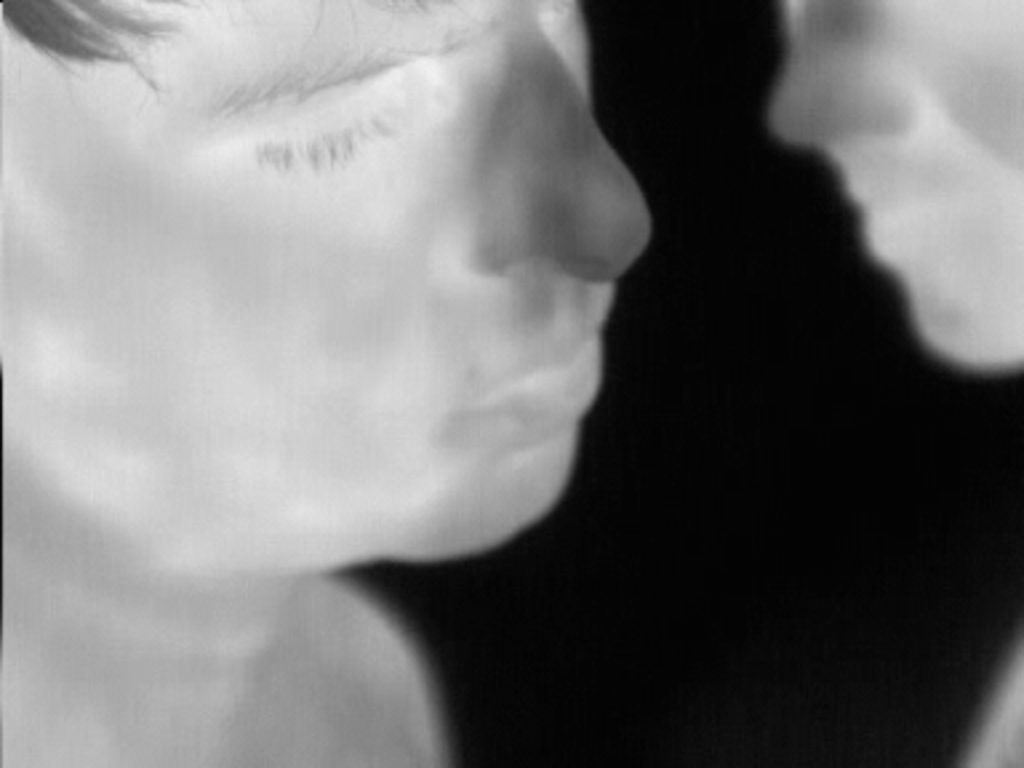
** Now that I think about it, your EP and your music is really, very cohesive. Everything applies, in that it all relates, musically and conceptually, in a really interesting way. Especially, also with your visual work, these associations, like talking about institutions, while the word ‘institution’ can apply to so many different things.
VK: It’s important to me that there is a sense of atmosphere or aesthetics that is kind of ambiguous, that there is some sense of violence and hysteria but also almost a kind of ecstasy or enthusiasm that’s uncanny, in a way. Depending on how you listen to it, it can also be sad but still almost like a drug or something. I want to craft things in a way so that, affectively, one can connect with them in different moments or moods, in quite different ways and discover different contradicting elements in terms of affect and emotion.
** So you take this Sacred Harp music, which already is loaded with contradictions. Where even beyond the exclusion of someone that isn’t participating, there are also people, I’m assuming, that aren’t even given the option of participating in the first place…
VK: Based on their faith or for other reasons institutionalised churches or community churches exclude people, obviously…
** There’s this other element to it, where you’re basically recreating this choir live by pointing this infrared camera at your audience. They don’t have a choice and also it’s achieved via technology. It’s this idea of surveillance — self-surveillance and surveillance of others, even, within small communities, which runs through your work.
VK: Yeah, most of it deals with or discusses looking as a violent act, which doesn’t make my work less violent, I just accentuate or discuss ways of looking back, or acts of looking back. I emphasize that violence, as well, and I think in performance setups, where people are used to not just look at something but also un-look at themselves, that’s interesting to actually shift that dynamic and discuss what is actually being looked at, who is an agent in the situation? Does it need to be different, or how can we actually deal with that situation?
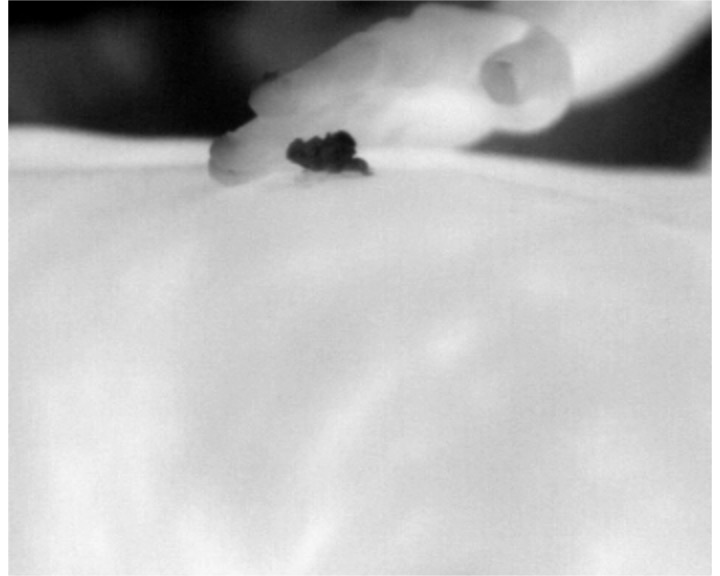
With the infrared vision, it makes the audience look at each other through that enhanced gaze. I think shifting that focal point away from the stage and having people look at each other through technology, that’s interesting to me. And of course, I work with very particular technology of thermal vision or infrared cameras. It is mostly used in military or border control, so this kind of camera that I use is what is being used at the EU land borders to detect heat signatures at night, of people who want to enter a country. I deliberately use that technology and bring it into contexts where most of the people do not have to deal with any of that kind of gaze — or where the stakes of inclusion or exclusion are very low, in comparison.
**Talking about the gaze, and the violence of the gaze, is this something that you personally have experienced and where that interest comes from?
VK: Yeah, I think so. In a lot of ways, whether I perform on stage or not does not make much of a difference in the way that I am being looked at, and also since my understanding of myself, of course works a lot through the reflection through others. I think I have learned to look at myself through the eyes of others but, also, you obviously cannot know for certain how someone perceives you, how they look at you. So it also instills some sense of suspicion in you, in a way, you always presume to know how somebody looks at you, and why. I think psychologically that does something special to someone who has learnt to look at themselves through the eyes of others. I think a reaction towards the inability to blend-in as ‘normal’ is always there. There’s always this moment of being aware of one’s difference and that is constantly confirmed by the way people look. It’s kind of a moment where you’re constantly on stage, and that kind of ‘off-stage moment’ is not really happening.
**Do you think that ‘off-stage moment’ is possible if you found the right community?
VK: No, not at all. I think that sense of judgment is a fundamental problem. When people realise that the Other is not themselves, then everyone gets angry. I think that, in any kind of context, it should lead people to, not accept difference but to actually accept not understanding someone else, or not fully grasping or getting someone. We’re all different and that’s where a lot of problems come from.
I think for people to get that things are complicated — and that different people and different aspects of social markers they bear come with certain privileges and privations that also play out differently, at different stages of time in their lives — it’s very hard to deal with, it seems. There’s also a lot of trauma, envy and hurt in people and I think it’s honestly hard for most to actually deal with the fact that the Other is Other and not ourselves. It’s frustrating the we can probably not understand the Other, but it might then, perhaps, be preferable not to make that the basic condition in order to legitimize and validate someone, to understand their suffering.
Only once they can argue and make their suffering understandable to us, we then legitimise their suffering and generously try to include them. I don’t think this is how it should work but this has been the history of feminist struggle, for instance, or its internal organizing logic, in which it confirms the hierarchy much more if those with more privilege or power have to be convinced of other people’s privation or suffering, in order to generously say ‘yes, I now get it… please step inside.’
I think that kind of understanding and that kind of disclosure that is expected from the one who is different, exactly that entitlement, is actually where the hierarchy gets stabilized, in a sense. That’s also in acknowledging that, apart from the gaze and the violence of looking, there’s also that violence of understanding.**
share news item


